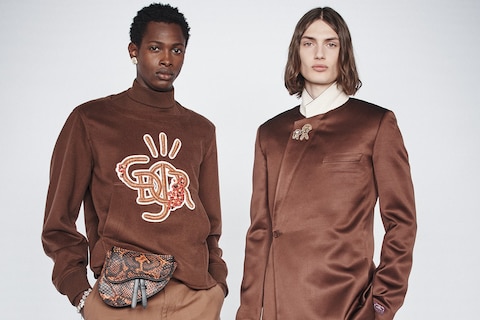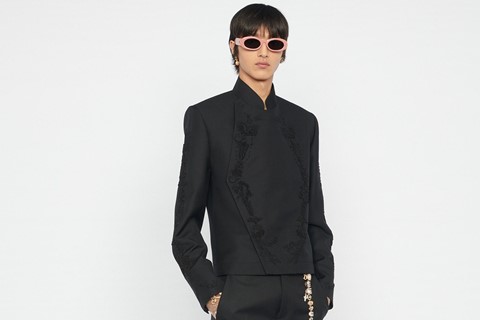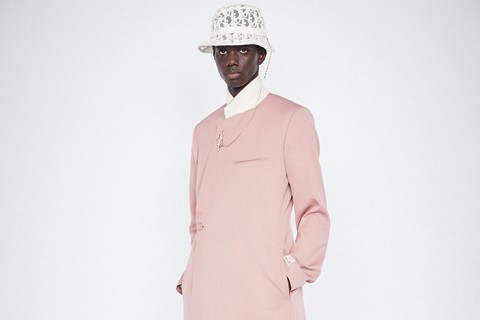How do you define an ‘artist’ at the start of the 21st century – over 100 years since Duchamp inverted a urinal and called it ‘Fountain’? After a series of Dior collections exploring the idea of artistic collaboration with fine art figures from KAWS to Raymond Pettibon to Peter Doig, reflecting Christian Dior’s own background as an art lover and gallerist before he became a couturier, for his Spring/Summer 2022 menswear show Kim Jones widened the brief. After Doig – the most painterly of contemporary painters – he turned to Travis Scott, the Houston-born musician, for a deep-rooted, fully-fledged artistic collaboration inspired by the personal style of a leading musician. It was quite a trip.
The trip began in Normandy, in Christian Dior’s turn-of-the-century childhood rose garden, which formed the start of the set of this Dior show – the first staged for a physical audience since last January. Immersion was key: under a psychotropic desert sky, Normandy morphed into a Texan desert, gardened with cacti. Which isn’t so outlandish: Dior’s first trip to America, within months of launching his house in 1947, was to that state: he wrote about the grand canyons and huge deserts of America, and dressed the matriarchs of the region grandly (he was receiving the Neiman Marcus award for fashion at the time of that debut visit).
The collection drew on Dior’s decade-deep heritage and Scott’s more recently-refined public image, fusing the two together in what Kim Jones called “Cactus Jack Dior” – a portmanteau marrying the couture house with Scott’s record label imprint. He was thinking about America, and artists – and Scott was one of the most exciting around. In a throwback to his earlier art collaborations, the two then approached quintessentially American neo-pop artist George Condo to create a series of one-off shirts, pinned on the wall and painted like canvases, which will be auctioned to help pay for education scholarships to support young creatives.
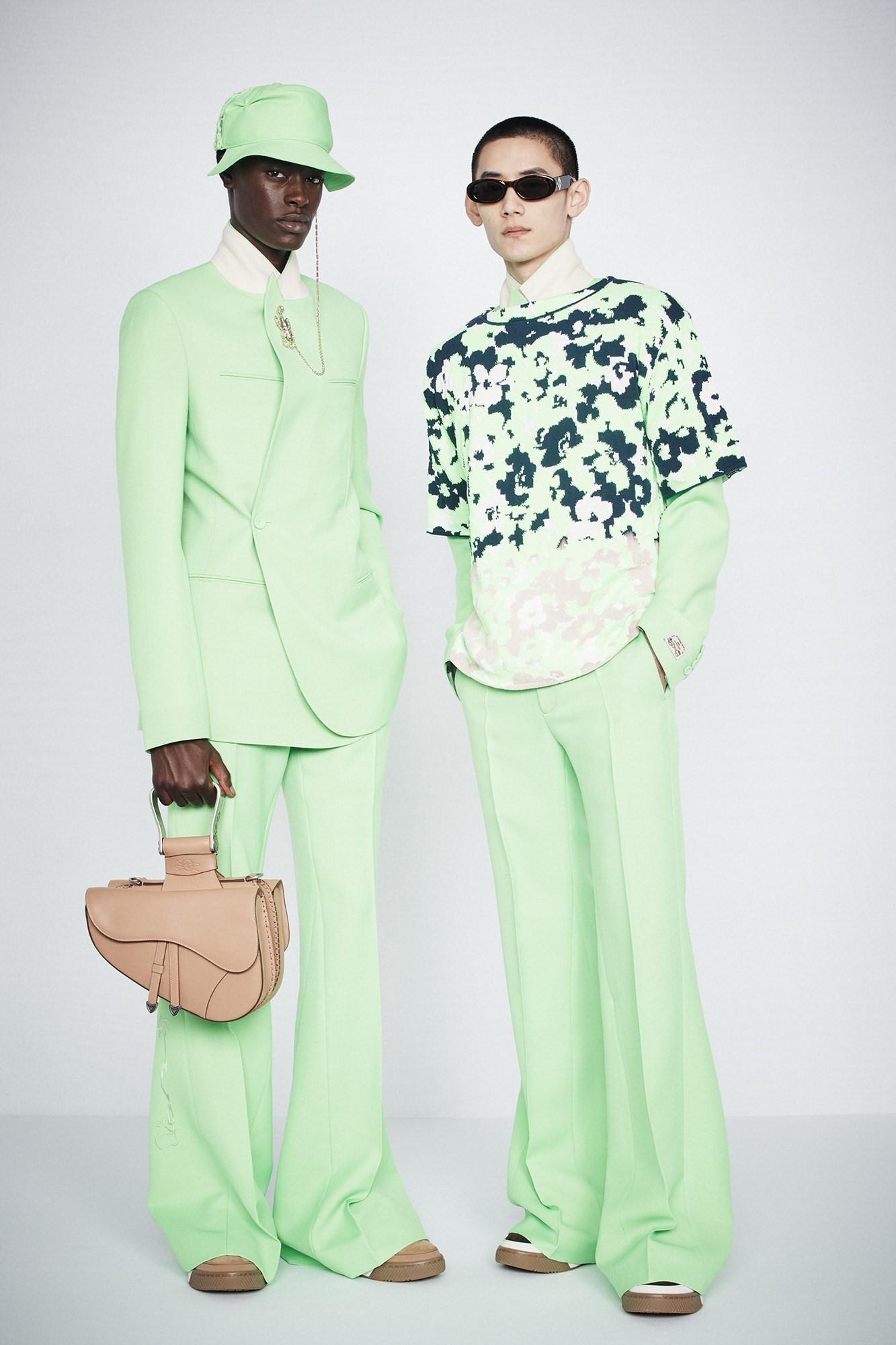
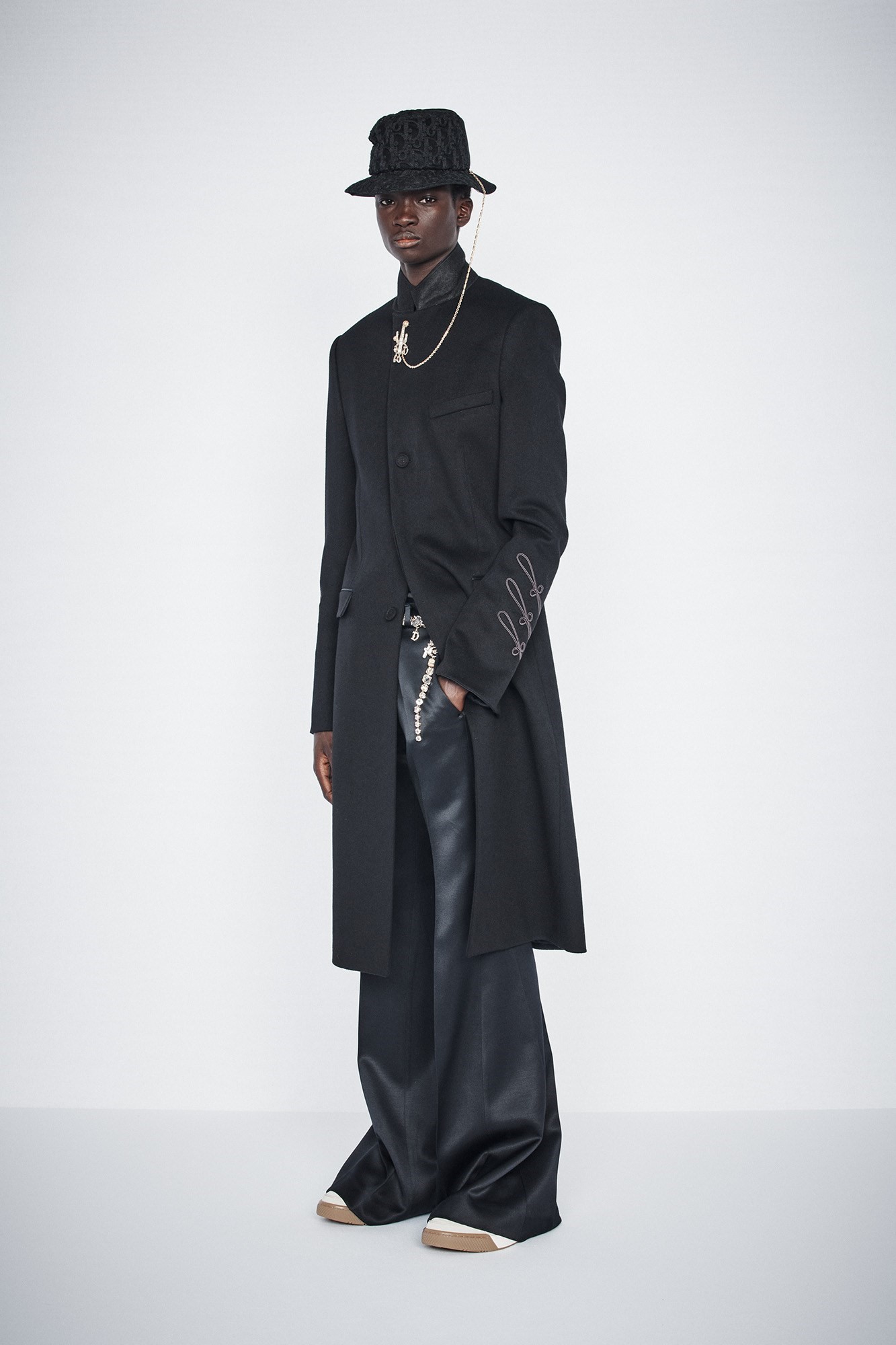
The non-hierarchical approach to that label of ‘artist’ was reflected in clothes that, like the modern wardrobe, messed up the idea of ‘dressed-up’: tracksuit trousers mixed with an immaculately-tailored jacket (tailoring being the hallmark of Dior, Jones said), the Dior Oblique ‘jacked’ with new lettering, the traditional Toile de Jouy of the house redrawn with desert scenes, the saddle-bag doubled-up and dangling from a stirrup. Details inspired by Scott’s childhood – cowboy tooling, bolo tie clasps, soutache embroideries – were combined with painstaking techniques and details. Colours were inspired by the desert – faded roses and mauve, pale blues, a vibrant juicy chartreuse like engorged oasis vegetation – but they were also the shades of Dior’s mid-century ball gowns. The flared trousers seem of the moment, but they and the narrow-shouldered tailoring with sloping sides echoed Dior’s 1956 ‘Arrow’ couture line. Embroideries taken from Dior gowns were patched into Varsity letters, decorating souvenir jackets in butter-soft suede and cashmeres. It was a full-throttle trip, sampling Americana and haute couture history with wit and panache, to make it resonate in the now.
“It’s really a conversation between two friends,” said Jones. That conversation encompasses Jones and Scott, of course, but also France and America (Statue of Liberty, anyone?), past and present, and of course Christian Dior himself and those who have inherited his mantle, and honour his name today.

